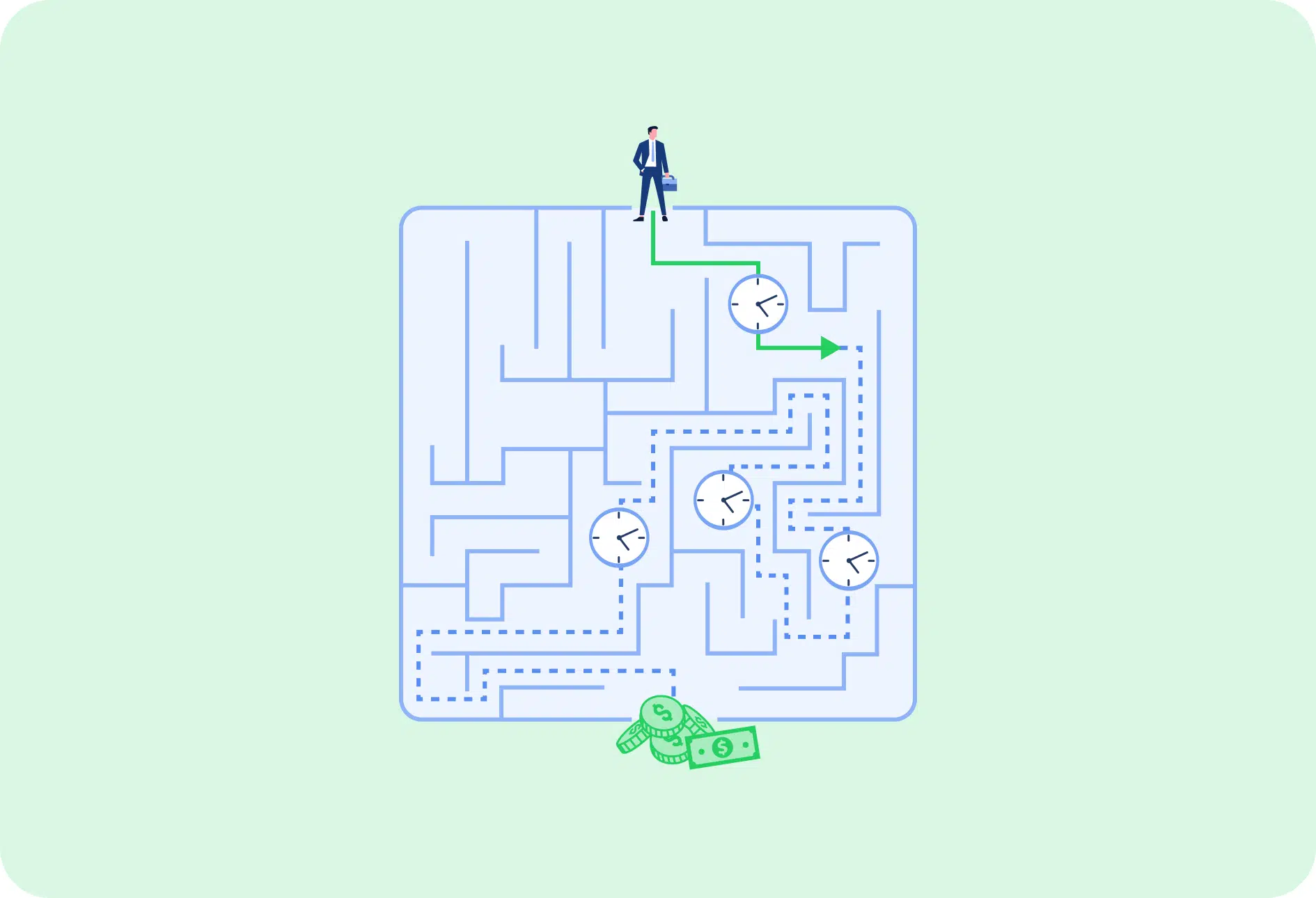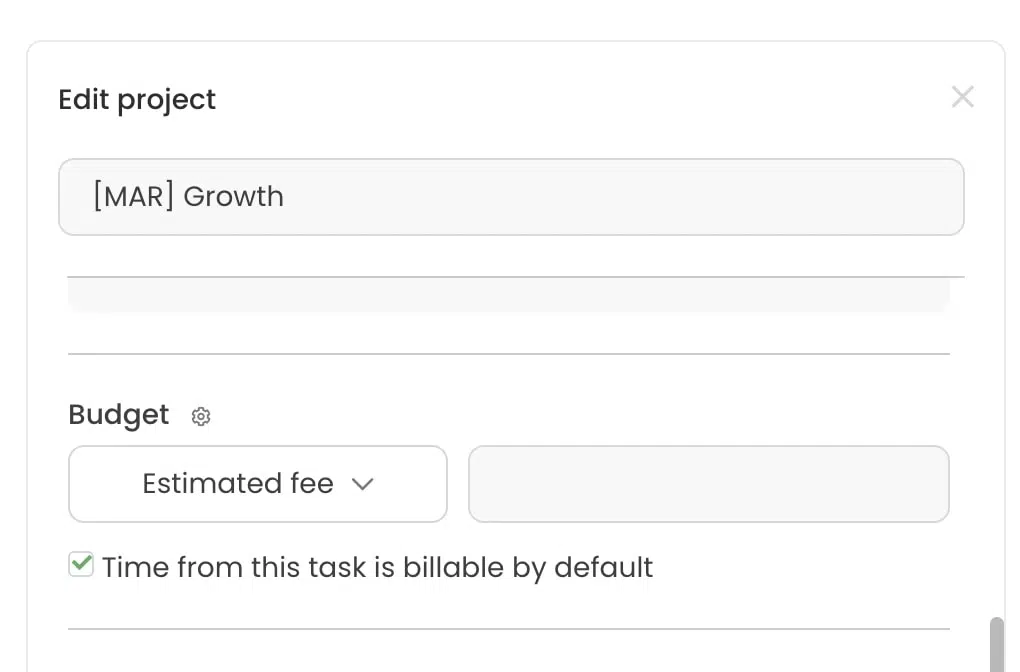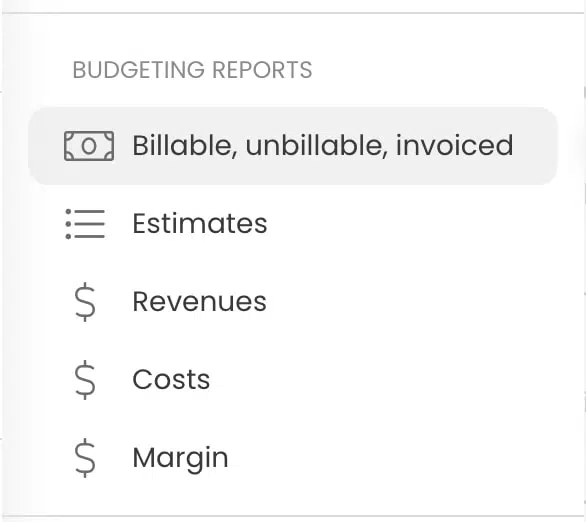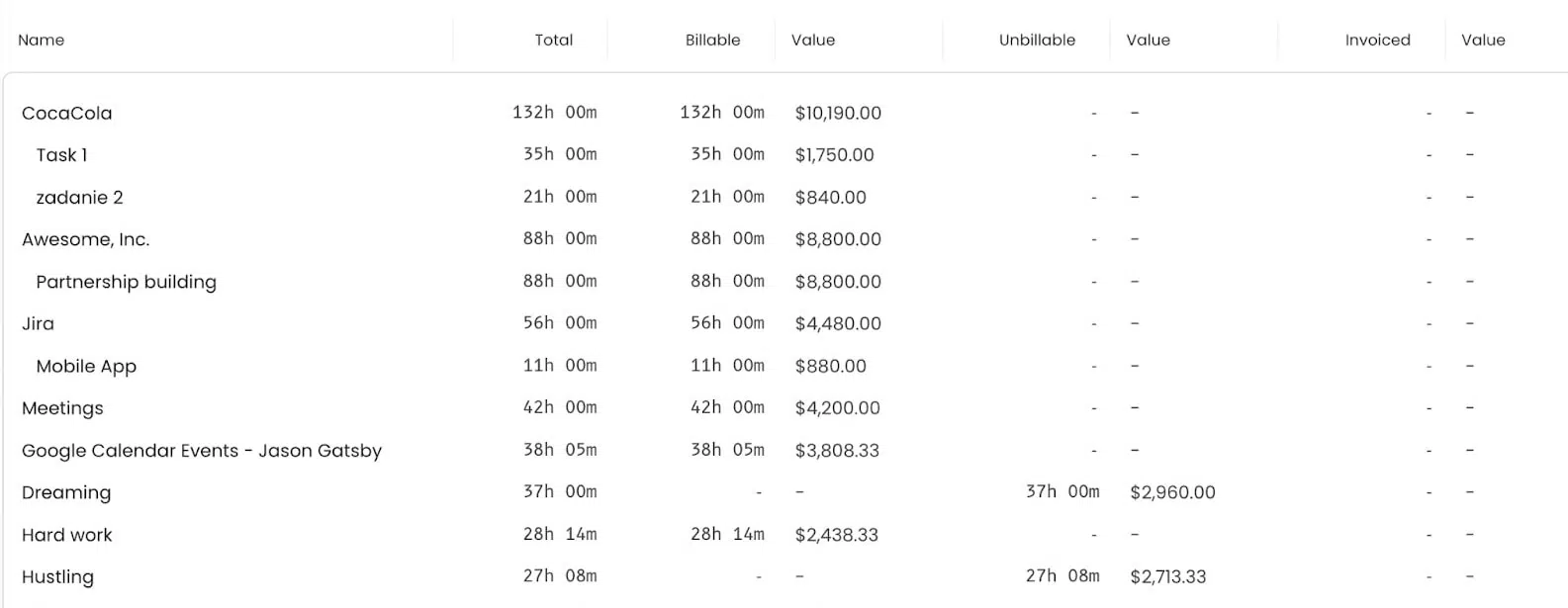The Complete Guide to Billable Hours: Best Practices
-
Lorea Lastiri
- February 10, 2023
- 10 min read

While acquiring more clients is important, keeping track of how many hours you spend working on each project is equally important. Thus, tracking billable and non-billable hours is critical as it helps measure efficiencies. Doing this also helps in measuring KPIs in your organization.
Get to know where your time goes with TimeCamp!
Track time in projects and tasks, create reports, and bill your clients in just one tool.
An organization’s growth is dependent on the customer base. Working with existing customers and signing in new ones is the desire of every business. With more projects, there’s a high chance that the organization’s top line will go up.
The goal of any operations or activities in any organization’s office is to ensure quality deliverables as far as customers are concerned.
It’s also good to note that several other activities run simultaneously and have nothing to do with customer deliverables. The company still spends resources when undertaking such activities.
Thus knowing how, where, and when an organization is spending its resources is important. Equally important is how much of these resources are utilized in creating deliverables.
Below is a complete guide on how your company can enhance billable hours. We’ll help you fully comprehend what billable and non-billable hours are, including the best practices to increase the billable time.
Let’s get to it right away.
What is billable hour (and non-billable hour)?
Billable hours are how long you spend doing a project or activities directly related to a specific client. The client is going to be charged based on an agreed hourly rate.
Most businesses use an hourly rate when billing their clients. A few examples include freelancers, law firms & legal professionals, accounting firms, and advertising agencies. Others are PR firms, customer service, and web developers.
The organization will track billable hours used in completing the project and raise an invoice against what was delivered.
Billable time tracking forms an important aspect of the functions of every company or organization. This approach is helpful where it’s complicated to use itemized billing.
Examples of instances that are difficult to itemize include billing for meeting attendance, communications, and correspondence. In such cases, your organization has invested time as well as resources. However, it’s difficult to have them itemized and billed on an invoice.
Other instances include project-related research, site visits, and modifications or revisions done at the client’s request after the initial deliverable.
Thus, billable time tracking is helpful in such instances.
Non-billable hours, on the other hand, are related to activities that the organization undertakes but cannot be billed. They concern the internal activities of the organization.
Non-billable hours include attending resource allocation internal meetings, submitting progress reports to one’s senior or supervisor, and more.
As much as such activities are vital to how an organization functions, they’re not directly linked to an ongoing project. That’s why they’re called non-billable hours.
For activities within the category of non-billable hours, they’ll be charged to an organization’s account since there won’t be any compensation expected from a client.
That means it’s good to try and reduce non-billable hours as much as possible while ensuring you increase billable hours.

Why do companies track billable hours?
Companies track billable hours to ensure the time spent on a project or task can be justified. Tracking time ensures a team’s working hours are adequately compensated and that the billable time is paid for.
Accurate billable time tracking isn’t just about more success in your future projects. It’s also about giving realistic vision into many business statistics that include:
- The number of working hours and resources your employees spend on a specific task or project
- The extent of profit or loss that the company has made
- Your team’s productivity as well as performance
- How to be more efficient with planning
- How to make better billing estimates in the future
- Whether the project or task was cost-effective for your company or business
- Billable time tracking helps in resource mobilization
- How to ensure in the future that your projects are more fruitful
👉 Check also our list of best time and billing software
How to calculate billable hours
Calculating billing hours is especially difficult because it requires you to mindfully keep track of the time spent while engaged individually in each project and at the same time make a log actively.
You can use spreadsheets to do so, but you might end up throwing in more non-billable hours. Spreadsheets, therefore, cannot be accurate.
So, here are ways to track billable hours accurately:
1. Invest in quality billable hours tracking software
To achieve quality, you need to invest in quality. Time tracking software or tools help register time where it actually belongs while saving time. It makes it easier to know how many billable and non-billable hours are invested in a project.
Using a spreadsheet or pen and paper can be such a painstaking experience. Going in this direction can result in differences in pay rates, and there’s a high chance of a human error occurring.
When there’s no project tracking in real-time, it’s not possible to measure billable and non-billable hours accurately. When this happens, the company might end up with a steady loss of revenue.
To capture the hours spent on a project, you’d better use time tracking software to make the process easier and more convenient. This is the only way to achieve true quality.
Legal professionals or attorneys can use billable hours chart to quickly calculate the increase in the number of hours to charge.
Using software means you won’t have to get other people to aggregate the required data into useful information. The software ensures diligence and promptness in recording employee hours. What is billable hour of your employee worth? Time tracking app will show!
Implementing billable hour tracker brings about immediate benefits, including:
- It’s easier to know how much each employee is contributing towards the success of the project as well as the business’ overall success
- Employees can stay focused and do their work effectively
- It enables transparency since timesheets as well as reports with various types of data will be provided. This means tracking changes by management as well as employees becomes easier
- Time tracking software ensures confidentiality since the data will only be available to the organization’s team
- It helps employees and management to work in unity since they’ll be getting data and information from a central place
- It ensures efficiency in workflow
Employees can use billable hours tracking software such as TimeCamp to record the time spent on a particular project. They’ll be punching in the time against task or project codes.
With TimeCamp you can also:
- mark time entries as billable and non-billable
- issue invoices for billable hours based on specific projects
- track projects’ profitability with easy-to-use reports and share them with your clients
- set different billing rates for specific projects and users
How TimeCamp billable hours software works
Let me elaborate a bit more about how easy it is to track time spent at work with TimeCamp billable hours tracking software:
-
every time entry can be marked as billable or non-billable

-
within every project’s settings, you can mark whether time tracked within it should be counted as billable or non-billable hours. It is another example of time-saving, as you will not have to repeat this process with every entry on a given project.

-
section ‘Budgeting reports’ allows generating the report that shows all time entries divided into billable hours and non-billable hours


This function helps to monitor whether your employees do not spend too much of their work time on non-billable projects and tasks. The additional ‘Billing rates’ function shows us how much billable and non-billable hours cost. The next columns show the value of the invoices and the employee payments. A quick comparison can identify your project’s profitability.
-
TimeCamp allows to generate invoices based on billable hours. All that needs to be done is just selecting the timeframe for the calculation. The ready invoice will be based on the billable hours and the billing rates we previously set for the project.
-
This is a huge help in clients’ billing. There is no need for manual calculations anymore!
The above-mentioned are only a few functions TimeCamp track billable hours app and software offers you. Download our billable hours tracking software and uncover the full range of possibilities.
Also, see how TimeCamp works on our video:
2. Track time on all activities
An organization that monitors and examines non-billable hours can easily discover trends within the bigger picture. It’s also easier to see the trends in the finer aspects of the business.
With the correct view of every situation in the business, shifting priorities and setting guidelines for activities that include meetings, team activities, and training would be easier.
It becomes easier to understand how long a client’s project meeting should take, the length of time to be committed to training, if your team works well together, and more.
Having the correct perspective of things makes things easier for everyone.

3. Automate non-billable tasks
Non-billable hours can take a huge chunk of your day. But the good news is that it’s possible to automate some of those tasks that consume your time. This way, you can minimize your non-billable tasks.
Before automating non-billable work, you need to take your time to monitor and analyze them to know which ones consume a lot of time.
There are many cases where employees claim to waste a lot of time. They include performing administrative work, writing reports, and creating invoices.
It will ensure faster management of projects by your team and drastically reduce the time spent on non-billable work.
Automating non-billable tasks using software ensures centralization of time capture and eliminating challenges associated with doing things manually.
Automated tracking of non-billable hours also streamlines billing and invoicing. It also improves employees’ morale, saves time, and makes the clients happy.
How to increase billable hours – billable hours best practices
There are several things that you can do to push up billable hours. They include:
1. Bunch queries together
When employees work on a particular project, they’re likely to face challenges. Thus, they could bombard their managers or seniors with queries and emails.
It’s fine to have queries, but employees might end up wasting time.
Also, it might not be possible for managers to respond to emails or queries immediately. Therefore, employees will experience hurdles, leading to a further delay in delivering a project.
To avoid or minimize this, employees can submit any queries, updates, or challenges related to the project a day earlier or as the day starts. This saves time and increases the speed with which a project is undertaken.
As you spend more time on the actual work, you will be more efficient. This means there will be an increase in billable time and a reduction in non-billable ones.
2. Remove distractions and tackle procrastination
Are you wondering why your track billable hours app shows a lower number while your non-billable time is higher?
You might want to look at how long you take to do low-value tasks or the time spent procrastinating on tasks. There are other distractions like social media or calls that need looking into. Also, consider the same issues with your employees.
It’s known that procrastination is prevalent among individuals, with some even taking up to 2 hours procrastinating on a task.
You and your employees need to remove any form of distractions and tackle procrastination during working hours.
3. Track billable hours in real-time
It’s important to track billable hours in real-time with time tracking app to avoid losing untracked billable time.
In case you can’t tell what you did at a particular time concerning the project, you might end up with inaccurate results.
So, recording your time whenever you clock in and out of a task or project is critical in knowing how many billable hours you have.
4. Delegate non-billable tasks
Recording non-billable hours makes revisiting your tasks easier. Analyzing where and how to enhance efficiency would also be easier.
You might think spending only a few hours on such tasks daily might not affect your overall productivity.
For example, if you spend too much time taking care of administrative tasks, it would be prudent to hire another person to do them. This will give you sufficient time to focus on the core issues of your current project. Or find tools that can perform the task instead of you. There, for example, the creation of a list of potential customers can be obtained without collecting it manually, but by installing a high-quality email finder tool for lead generation.

5. Track non-billable hours
Non-billable activities can eat so much into your time. However, it’s possible to keep track and automate some tasks that consume much of your time or that of your employees. This will help in cutting down on non-billable time.
But you can only get there by analyzing all non-billable time to understand the tasks that take too much time. This includes creating invoices, taking care of administrative duties, and writing reports, among others.
This makes it possible for you to push up the total billable hours. There are software solutions that you can use to keep track of and automate non-billable hours.
6. Track all the billable hours
You might think a few minutes are too little to affect the total billable hours. The truth is, you need to track every single minute or hour.
By using billable hours app and software, you ensure nothing goes unnoticed and that every minute or hour is accounted for. You’ll get the correct picture of the amount of time that your team puts into the project.
With automatic monitoring of billable and non-billable hours, you’ll ensure you have more control over your tasks and resources. This generates vital insights regarding your team’s productivity.
More benefits that come with tracking all the billable hours include time management, reinventing your practices for resource management, discovering internal trends, and forecasting demand.
Tracking and automating billable hours also enhances project profit because billing clients would be more accurate.
7. Completing billing descriptions
Writing complete descriptions when billing clients is vital. This is especially useful for legal professionals or law firms.
Receiving disputes on legal bills from your clients causes inconveniences, and you end up spending more time solving the disputes. This has a bearing on billable hours.
By completing billing descriptions, client disputes occur less.
When you send a bill or invoice to a client, ensure it goes with a full description. So, instead of indicating something like ‘2 hours of a call’ for example, you’re better off indicating what the call was all about.
With more details on your bills or invoice, you’ll cut down on client disputes. This means you’ll save time, which translates into enhanced billable hours.
Conclusion
Companies must track billable and non-billable hours. They should also understand how to increase the billable time. This is especially important for firms that charge their clients based on an hourly rate.
Still, many organizations and firms today utilize billable hours in measuring revenue that comes directly from clients.
It is time to implement those billable hours best practices. Do you need software that can easily track billable hours without a struggle? Then you need to check out TimeCamp billable hour tracker. The time tracking software allows you to track the time spent by you and your employees on a specific project.
Once you type ‘in’, the software will begin to track your time for that specific project.
Create your free account to start tracking all your time!


